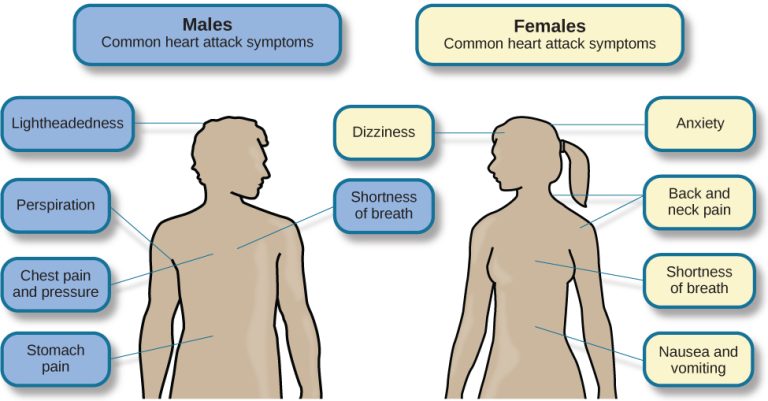Chapter 17. Well-Being
WB.30: Deep Dive – Cardiovascular Disorders and Stress
Approximate reading time: 3 minutes
The cardiovascular system, which includes the heart and blood vessels, is crucial for our health. Disorders in this system, known as cardiovascular disorders, have been closely studied, especially because of their link to stress (Everly & Lating, 2002). Heart disease, a type of cardiovascular disorder, is a leading cause of death. It’s responsible for about one in three deaths in the United States and is a major cause of death worldwide (Centers for Disease Control and Prevention [CDC], 2011; Shapiro, 2005; Wahab et al., 2020).
People with heart disease often experience chest pain or discomfort, known as angina. This happens when the heart doesn’t get enough blood. The pain can feel like a heavy pressure on the chest, and it might come with a burning sensation and shortness of breath. These symptoms can also spread to other parts of the body like the arms, neck, jaw, stomach (causing nausea), and back (American Heart Association [AHA], 2012a).

A major risk factor for heart disease is high blood pressure, or hypertension. This condition makes the heart work harder, increasing the risk of heart attacks, strokes, heart failure, kidney failure, and even blindness. Hypertension is often called the “silent killer” because it usually has no symptoms, so many people don’t know they have it (AHA, 2012b; Ostchega et al., 2020).
Many risk factors for cardiovascular disorders have been identified. These include age, income, education, job status, and lifestyle choices like diet, smoking, lack of physical activity, and heavy drinking. Obesity and diabetes are also risk factors (World Health Organization [WHO], 2013; Lavie et al., 2016).
In recent years, there’s been more focus on how stress and psychological factors affect heart health. Different kinds of stress, like job pressure, natural disasters, marital problems, and living in noisy areas, have been linked to heart problems. For example, hypertension can be influenced by these stressors. Experiencing discrimination, especially among African Americans, has also been linked to hypertension (Sims et al., 2012; Gallo et al., 2014).
Image Attributions
Figure SUP WB.7. Figure 14.7 as found in Psychology 2e by OpenStax is licensed under a CC BY 4.0 License.
To calculate this time, we used a reading speed of 150 words per minute and then added extra time to account for images and videos. This is just to give you a rough idea of the length of the chapter section. How long it will take you to engage with this chapter will vary greatly depending on all sorts of things (the complexity of the content, your ability to focus, etc).

